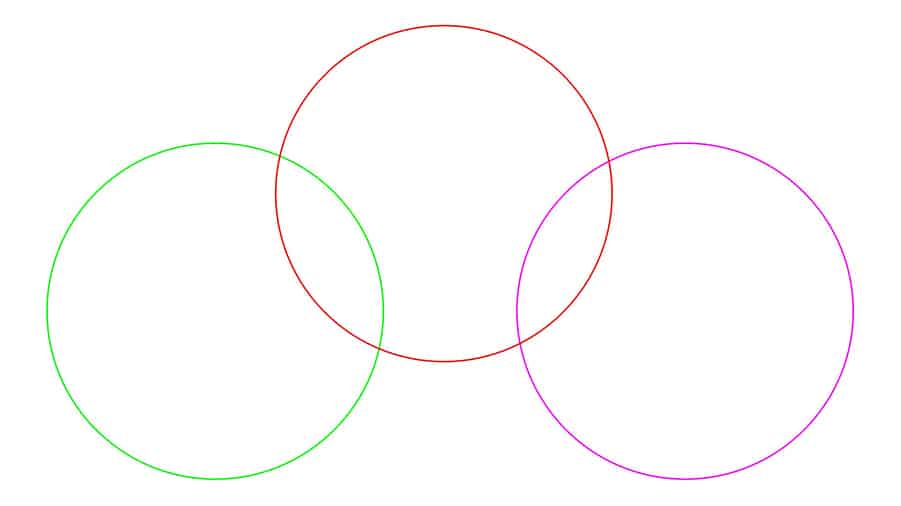There are infinite microphone techniques. Stereo microphone techniques are some among the simplest and most effective methods for capturing realistic recordings.
In this article, you’ll learn what a stereo microphone technique is and the most common microphone techniques used in stereo recording.
What is a Stereo Microphone Technique?
Let’s start with what a stereo microphone technique is on the most basic level.
A stereo microphone technique is a recording technique that uses a pair of microphones to capture sound, producing separate left and right signals that provide an immersive experience for the listener.
Audio recording engineers can create beautiful and realistic recordings by using a pair of microphones, each capturing a different signal based on its placement and directionality.
How Stereo Microphone Techniques Work
Stereo microphone techniques are designed to optimize a recording for the way a human being hears the world around them. Specifically, the way humans localize sound sources in space.
Humans are evolutionarily equipped with the ability to determine where sounds originate based on the following factors: Interaural Level Differences (ILDs), Interaural Timing Differences (ITDs), and Interaural Spectral Differences (also called Head Related Transfer Function, or HRTF).
Sound Localization Cues
Let’s explore each of these cues that allow humans to localize sounds.This will help us understand how the various stereo microphone techniques work.
To visualize these factors, we will imagine a standard stereo speaker system with a listener sitting in the center of the sound field.

Interaural Level Differences (ILDs)
Interaural level differences refer to the difference in the amount of acoustical energy that reaches each ear.
As we all know, sounds become quieter the further they travel from their sources. That’s because a sound wave’s energy is spread out over more area, resulting in a reduction of intensity. This is explained by the inverse square law. You can learn more about the inverse square law in this Audio University article.
If a sound comes from the left speaker, it is closer to the listener’s left ear. That means that the sound wave will contain more energy at the listener’s left ear and less energy at the listener’s right ear. Remember, sound intensity decreases over distance.
This is the basis for the first interaural cue for human localization of sound: interaural level difference. Generally speaking, if a sound is louder in one ear than in the other, the brain will determine that the sound comes from the direction of the ear that hears it loudest.
The pan knob on a mixing console works on this localization cue. Twisting the pan knob to the right sends more signal to the right speaker than the left, and vice versa.
Interaural Timing Differences (ITDs)
Interaural timing differences refer to the difference in a sound’s time of arrival at each ear.
As shown above, a sound from the left speaker travels a shorter distance to the left ear than to the right ear. Therefore the sound reaches the left ear first, before it reaches the right ear.
This is the second interaural localization cue: interaural timing difference. If a sound reaches one ear before the other, the brain will usually determine that the sound originates in the direction of the ear that hears it first.
Imagine the same signal in both the left and right speaker. If the right speaker is delayed, the signal from the left speaker will reach the listener first and result in the listener identifying the sound source as the left speaker, even though the sound is playing through both speakers evenly. This is called the Haas Effect.
Head Related Transfer Function (HRTF)
An interaural spectral difference, or a head related transfer function, refers to the difference in frequency content at each ear.
The human skull creates what is sometimes called “an acoustic shadow”. This results in the attenuation of some frequencies in the ear furthest from the sound source. Higher frequencies will be absorbed, resulting in a difference in frequency content between each ear.
This is much more subtle than the other interaural localization cues, but when paired with the other cues it is very powerful for creating an immersive listening experience.
Stereo Microphone Techniques
In this section, you’ll find the most common stereo microphone techniques.
There are four basic types of stereo microphone techniques: coincident pairs, near-coincident pairs, baffled pairs, and spaced pairs.
The specific techniques will be separated into these categories. You’ll learn the benefits and drawbacks of each category as well as the technical specifications for utilizing each technique.
Coincident Pair Stereo Microphone Techniques
The first category of stereo microphone techniques is a coincident pair.
A coincident pair is a stereo microphone technique that utilizes two directional or bi-directional microphones placed in very close proximity, with the intention to place each microphone element as close to the same point in space as possible.
Benefits of Coincident Pair Stereo Microphone Techniques
Level Differences
By aiming the microphones into different directions, a recording engineer can capture signals that can represent the left and right of the sound stage.
Sounds originating from various directions will reach each microphone more or less on-axis than the other microphone.
This results in a level difference in the microphone signals. When played back through headphones or speakers, the listener will experience interaural level differences between left and right.
Mono Compatibility
Coincident pairs of microphones occupy virtually the same point space. This means the sound captured by one microphone will be in-phase with the signal captured by another microphone.
If the left and right signals were not in-phase, the signals would work against each other when played through only one speaker. This is a result of phase cancellation.
Using a coincident pair of microphones will allow for interaural level differences when played through two speakers, while preventing phase cancellation when played through only one speaker.
To learn more about phase cancellation, read this Audio University article.
Drawbacks of Coincident Pair Stereo Microphone Techniques
No Time of Arrival Differences
Although placing microphones in very close proximity reduces phase cancellation problems and allows for better mono compatibility, there will be no time of arrival differences between microphones.
This means that coincident pairs do not provide the additional localization cue of interaural timing differences when played back to a listener.
Common Coincident Pair Stereo Microphone Techniques
This chart shows the specifications for the most common coincident pair microphone techniques:
| Technique | Microphone Types | Spacing | Angle | Illustration |
|---|---|---|---|---|
| X-Y | 2 Directional Microphones | N/A | 90° – 135° | |
| Blumlein | 2 Bidirectional (Figure 8) Microphones | N/A | 90° | |
| Mid-Side (MS) | 1 Directional Microphone 1 Bidirectional (Figure 8) Microphone | N/A | 90° |
X-Y Stereo Microphone Technique
The X-Y stereo microphone technique specifies a pair of directional microphones (usually cardioid).
The microphone capsules are placed in close proximity at a 90°-135° angle relative to each other.
Generally speaking, the microphones are panned hard left and hard right, sending one microphone signal to the left recording track and one microphone signal to the right recording track.
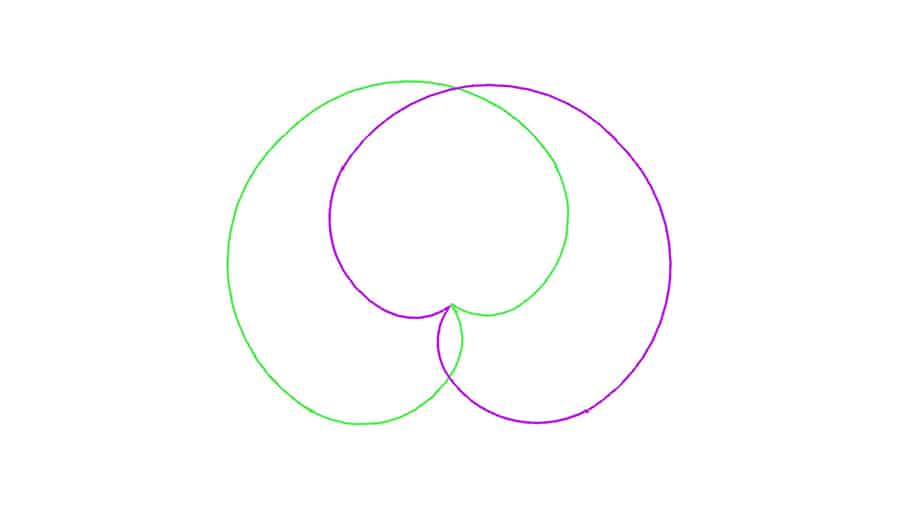
Blumlein Stereo Microphone Technique
The Blumlein stereo microphone technique specifies a pair of bidirectional, or figure-eight, microphones.
The microphone capsules are placed in close proximity at a 90° angle relative to each other.
Generally speaking, the microphones are panned hard left and hard right, sending one microphone signal to the left recording track and one microphone signal to the right recording track.
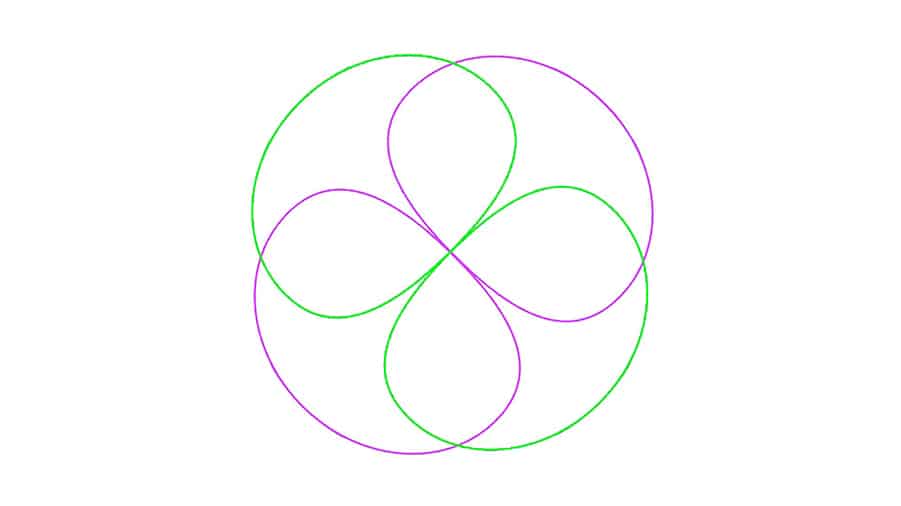
Mid-Side (MS) Stereo Microphone Technique
The Mid-Side stereo microphone technique specifies one directional microphone (usually cardioid) and one bidirectional microphone.
The microphone capsules are placed in close proximity at a 90° angle relative to each other.
The cardioid microphone signal is panned to the center. The bidirectional microphone signal is duplicated. One copy of the bidirectional microphone is panned hard left, while the other copy is panned hard right and polarity inverted.
An additional benefit of the mid-side technique is that the stereo image can be adjusted in post production by changing the level balance between the mid microphone signal and the side microphone signals.
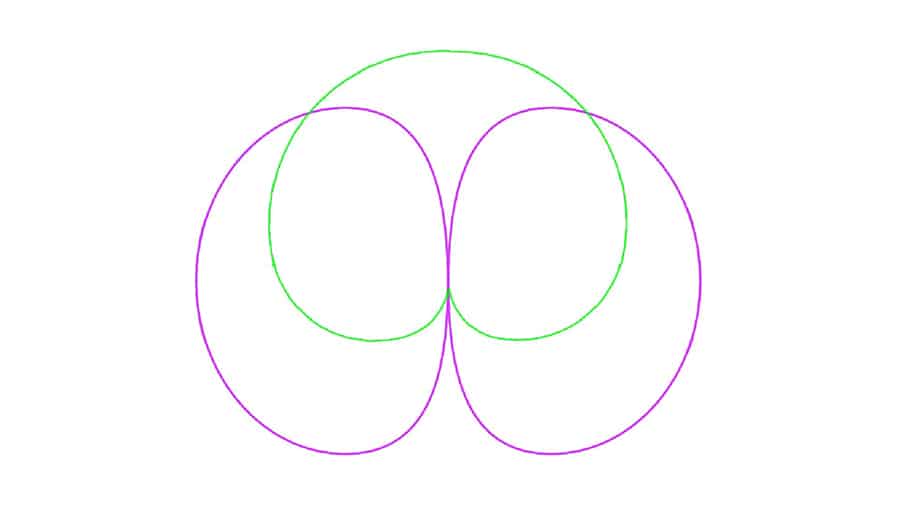
Near-Coincident Pair Stereo Microphone Techniques
The second category of stereo microphone techniques is the near-coincident pair.
The near-coincident pair is a stereo microphone technique that utilizes two microphones placed with a relatively small spacing between microphone elements.
Benefits of Near-Coincident Pair Stereo Microphone Techniques
Level Differences
In many cases, directional microphones are used. In these cases, by aiming the microphones into different directions, a recording engineer can capture signals that can represent the left and right of the sound stage. Sounds originating from various directions will reach each microphone slightly more or less on-axis than the other microphone.
The spacing between the microphones also provides a difference in level as a result of sounds attenuation over distance. This effect is present regardless of which microphone polar pattern is used.
When played back through headphones or speakers, the listener will experience interaural level differences between left and right.
Time of Arrival Differences
Near-coincident pairs of microphones are separated in space. This means time of arrival differences between the left and right channel exist.
This leads to the added benefit of interaural timing differences when played back to the listener.
Drawbacks of Near-Coincident Pair Stereo Microphone Techniques
Mono Incompatibility
The separation between the microphones allows for enhanced localization cues when played in stereo. However, this spacing also leads to a phase offset between microphones from sounds that originate closer to one microphone than the other.
If the left and right signals are not in-phase, the signals will work against each other when played through only one speaker. This is a result of phase cancellation.
Using a near-coincident pair of microphones will allow for interaural timing differences when played through two speakers, but may cause phase cancellation when played through only one speaker.
To learn more about phase cancellation, read this Audio University article.
Common Near-Coincident Pair Microphone Techniques
This chart shows the specifications for the most common near-coincident pair microphone techniques:
| Technique | Microphone Types | Spacing | Angle | Illustration |
|---|---|---|---|---|
| ORTF | 2 Directional Microphones | 17 cm | 110° | |
| NOS | 2 Directional Microphones | 30 cm | 90° | |
| DIN | 2 Directional Microphones | 20 cm | 90° | |
| EBS | 2 Directional Microphones | 25 cm | 90° | |
| RAI | 2 Directional Microphones | 21 cm | 100° | |
| Olson | 2 Hypercardioid Microphones | 5 cm to 20 cm | 135° | |
| Faulkner Array | 2 Bidirectional Microphones | 20 cm | 0° |
ORTF Stereo Microphone Technique
The ORTF stereo microphone technique specifies a pair of directional microphones (usually cardioid).
The microphone capsules are spaced 17 centimeters apart at a 110° angle relative to each other.
Generally speaking, the microphones are panned hard left and hard right, sending one microphone signal to the left recording track and one microphone signal to the right recording track.
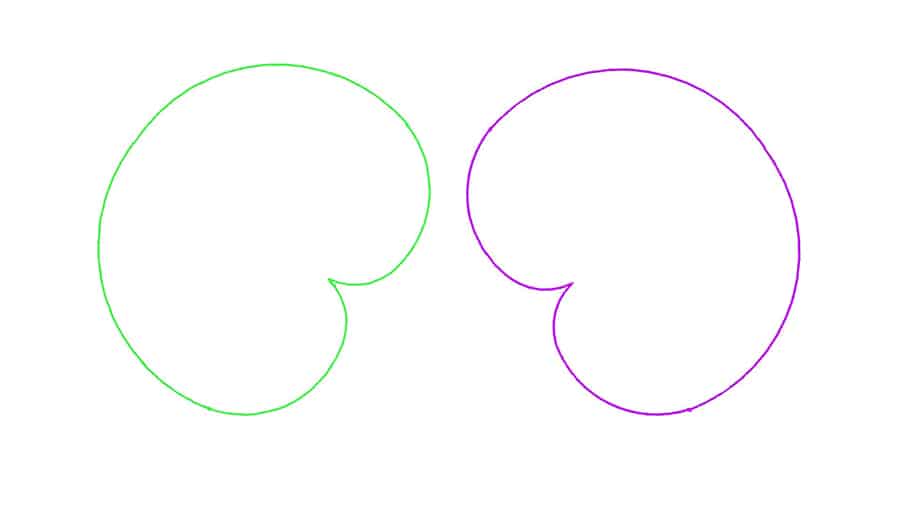
The NOS, DIN, EBS, RAI, and Olson techniques are very similar to ORTF. The specifications for each of these stereo microphone techniques can be found in the table above.
Faulkner Array Stereo Microphone Technique
The Faulkner Array stereo microphone technique specifies a pair of bidirectional microphones.
The microphone capsules are spaced at 20 centimeters facing the same direction (forward).
Generally speaking, the microphones are panned hard left and hard right, sending one microphone signal to the left recording track and one microphone signal to the right recording track.
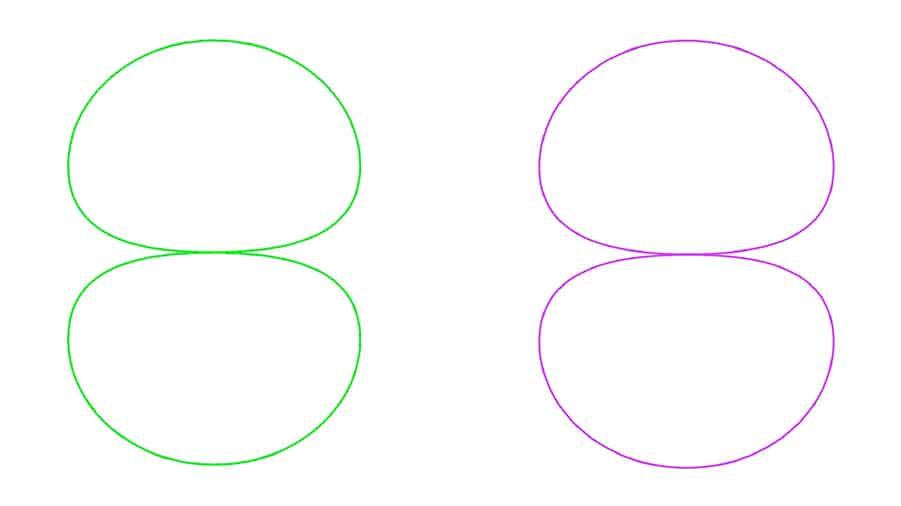
Baffled Pair Stereo Microphone Techniques
The baffled pair stereo microphone technique is technically a variant of the near-coincident configuration.
The baffled pair is a stereo microphone technique that utilizes two microphones placed with a relatively small spacing between microphone elements. However, baffled pairs are separated by a barrier between the two microphones.
Benefits of Baffled Pair Stereo Microphone Techniques
Level Differences
In many cases, directional microphones are used. In these cases, by aiming the microphones into different directions, a recording engineer can capture signals that can represent the left and right of the sound stage. Sounds originating from various directions will reach each microphone slightly more or less on-axis than the other microphone.
The spacing between the microphones also provides a difference in level as a result of the sound’s attenuation over distance. This effect is present regardless of which microphone polar pattern is used.
The baffle can sometimes attenuate a soundwave. So, if a sound reaches one microphone unobstructed and reaches the other microphone after interacting with the baffle, it could be quieter by the time it reaches the second microphone.
When played back through headphones or speakers, the listener will experience interaural level differences between left and right.
Time of Arrival Differences
Baffled pair microphone techniques are a subcategory of the near-coincident pair category. Near-coincident pairs of microphones are separated in space. This means time of arrival differences between the left and right channel exist.
This leads to the added benefit of interaural timing differences when played back to the listener.
Acoustic Shadow Effects
The benefit added by placing a barrier between the microphones of a baffled pair is that it mimics the head related transfer function (HRTF) interaural localization cue discussed in the first section.
A sound originating from the left side of the pair will reach the left microphone unobstructed. However, the sound will undergo a change in level and frequency balance after interacting with the barrier before reaching the right microphone.
Drawbacks of Baffled Pair Stereo Microphone Techniques
Mono Incompatibility
The separation between the microphones allows for enhanced localization cues when played in stereo. However, this spacing also leads to a phase offset between microphones.
If the left and right signals are not in-phase, the signals will work against each other when played through only one speaker. This is a result of phase cancellation.
Using a baffled pair, or any other near-coincident pair, of microphones will allow for interaural timing differences when played through two speakers, but may cause phase cancellation when played through only one speaker.
To learn more about phase cancellation, read this Audio University article.
Common Baffled Pair MicrophoneTechniques
This chart shows the specifications for the most common baffled pair microphone techniques:
| Technique | Microphone Types | Barrier Type | Spacing | Angle | Illustration |
|---|---|---|---|---|---|
| Baffled Omni | 2 Omnidirectional | 15 cm to 20 cm sphere | 15 cm to 20 cm | N/A | |
| Jecklin Disk | 2 Omnidirectional | 30 cm disk, 8mm thick, covered w/ 25mm foam | 16.5 cm | N/A | |
| The Wedge | 2 Boundary Microphones (PZM) | V-shaped wedge, 60 cm each side, 70° angle | 15 cm from tip of V-shaped wedge | 70° |
Baffled Omni Stereo Microphone Technique
The baffled omni stereo microphone technique specifies a pair of omnidirectional microphones.
The microphone capsules are placed on either side of a 15-20 centimeter sphere.
Generally speaking, the microphones are panned hard left and hard right, sending one microphone signal to the left recording track and one microphone signal to the right recording track.
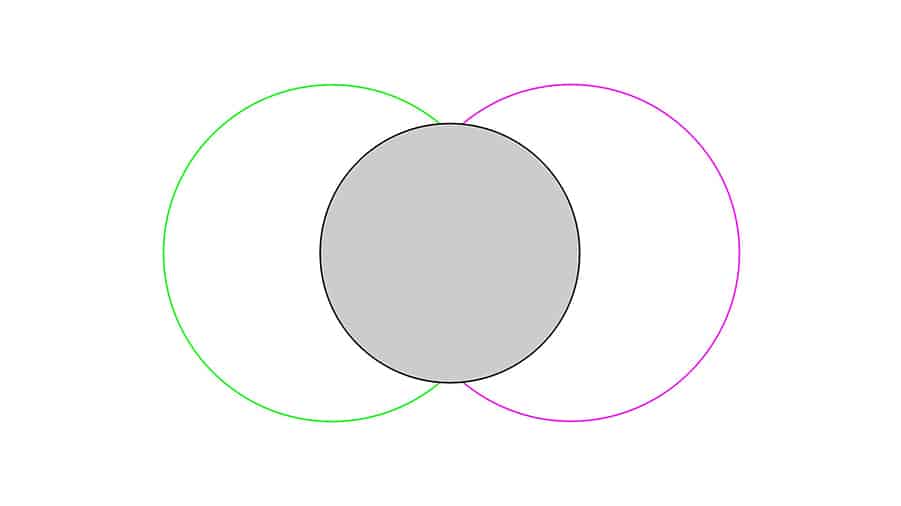
Jecklin Disk Stereo Microphone Technique
The Jecklin Disk stereo microphone technique specifies a pair of omnidirectional microphones.
The microphone capsules are spaced at 16.5 centimeters, placed on either side of a 8 millimeter thick disk that is covered with 25 millimeter foam. The disk is specified at 30 centimeters in diameter.
Generally speaking, the microphones are panned hard left and hard right, sending one microphone signal to the left recording track and one microphone signal to the right recording track.
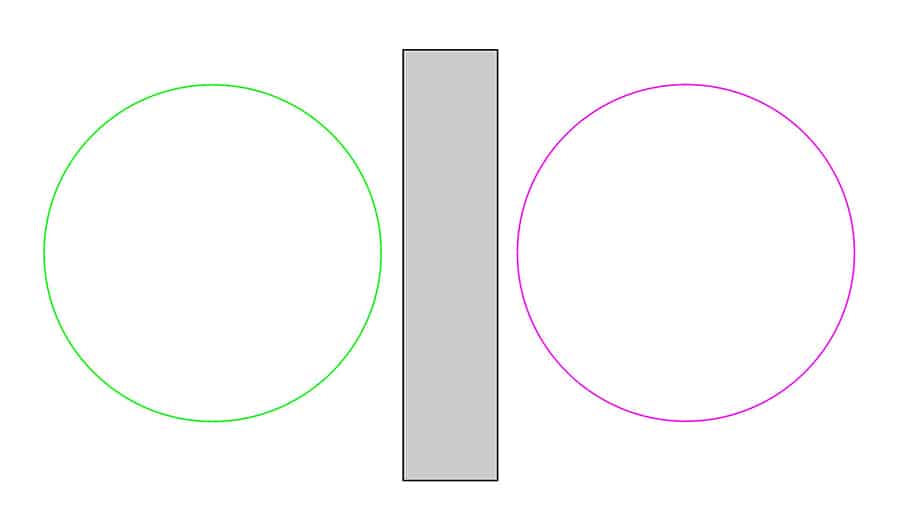
The Wedge Stereo Microphone Technique
The Wedge stereo microphone technique specifies a pair of PZM boundary microphones.
The microphone capsules are placed 15 centimeters from the tip of a v-shaped barrier. The v-shaped barrier is specified at 60 centimeters each side connected at a 70° angle.
Generally speaking, the microphones are panned hard left and hard right, sending one microphone signal to the left recording track and one microphone signal to the right recording track.
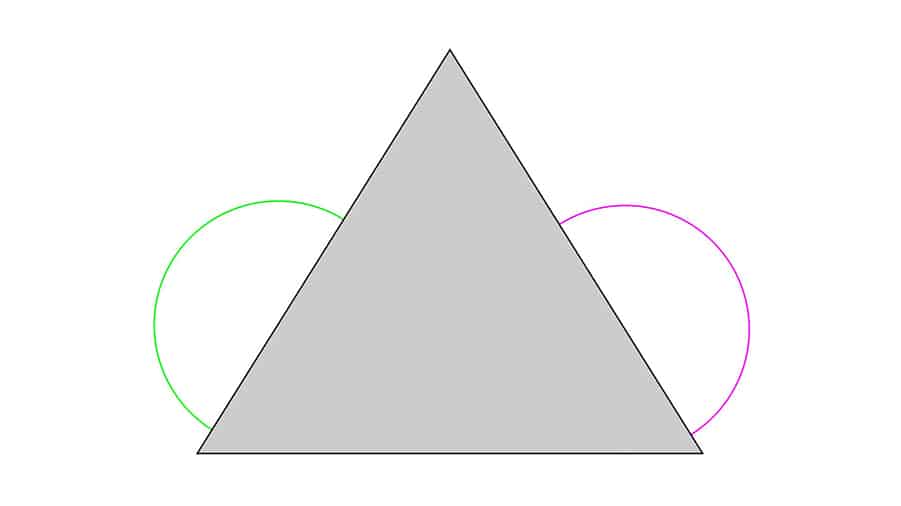
Spaced Pair Stereo Microphone Techniques
The final category of stereo microphone techniques is the spaced pair.
The spaced pair is a stereo microphone technique that utilizes two microphones placed with a relatively large spacing between microphone elements.
Benefits of Spaced Pairs
Level Differences
In some cases, directional microphones are used. In these cases, by aiming the microphones into different directions, a recording engineer can capture signals that can represent the left and right of the sound stage. Sounds originating from various directions will reach each microphone slightly more or less on-axis than the other microphone.
The spacing between the microphones also provides a difference in level as a result of sounds attenuation over distance. This effect is present regardless of the microphone polar pattern used.
When played back through headphones or speakers, the listener will experience interaural level differences between left and right.
Time of Arrival Differences
Spaced pairs of microphones are separated in space. This means time of arrival differences between the left and right channel exist.
This leads to the added benefit of interaural timing differences when played back to the listener.
Drawbacks of Spaced Pairs
Mono Incompatibility
The separation between the microphones allows for enhanced localization cues when played in stereo. However, this spacing also leads to a phase offset between microphones.
If the left and right signals are not in phase, the signals will work against each other when played through only one speaker. This is a result of phase cancellation.
Using a spaced pair of microphones will allow for interaural timing differences when played through two speakers, but may cause phase cancellation when played through only one speaker.
To learn more about phase cancellation, read this Audio University article.
Common Spaced Pair MicrophoneTechniques
This chart shows the specifications for the most common spaced pair microphone techniques:
| Technique | Microphone Types | Spacing | Angle | Illustration |
|---|---|---|---|---|
| A-B | 2 Omnidirectional | Based on sound source | N/A | |
| Spaced Cardioids | 2 Cardioid | Based on sound source | 0° | |
| Decca Tree | 3 Omnidirectional or Cardioid | Triangular Pattern – Side Microphones: 1 m from center Center Microphone: 1 m forward | 0° | or |
A-B Stereo Microphone Technique
The A-B stereo microphone technique, or spaced omnis, specifies a pair of omnidirectional microphones.
The microphone capsules are spaced based on the source being recorded and the desired stereo width of the recording.
The microphones can be panned hard left and hard right, sending one microphone signal to the left recording track and one microphone signal to the right recording track, or they can be panned slightly to each side to accomplish the desired stereo width.

Spaced Cardioid Stereo Microphone Technique
The spaced cardioid stereo microphone technique specifies a pair of directional microphones.
The microphone capsules are spaced based on the source being recorded and the desired stereo width of the recording.
The microphones can be panned hard left and hard right, sending one microphone signal to the left recording track and one microphone signal to the right recording track, or they can be panned slightly to each side to accomplish the desired stereo width.

Decca Tree Stereo Microphone Technique
The Decca Tree stereo microphone technique specifies either three omnidirectional microphones or three directional microphones.
The microphone capsules are spaced in a triangle. The side microphones are spaced 1 meter from the center and the third microphone is spaced 1 meter forward from the center.
The center microphone is panned evenly to each speaker, while the side microphones can be panned hard left and hard right, sending one microphone signal to the left recording track and one microphone signal to the right recording track, or the side microphones can be panned slightly to each side to accomplish the desired stereo width.
